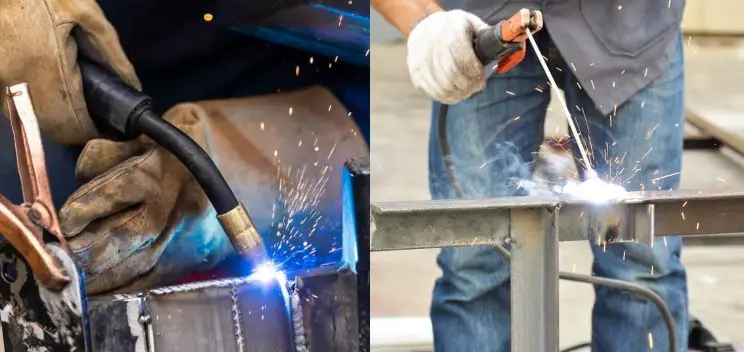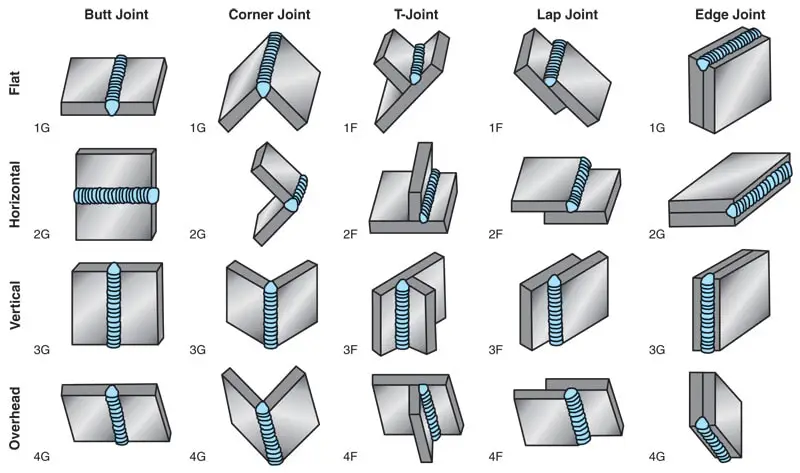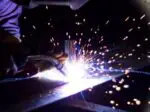TIG welding, MIG welding, and stick welding are some of the numerous types of welding procedures. Each of these methods of welding has advantages and disadvantages that make them suited for different purposes.
In this article, we will look at the fundamental differences between stick and MIG welding, as well as the benefits and drawbacks of each, and determine which one should be utilised for your specific welding needs. Also, which procedures result in a stronger weld?
In practice, Stick Welding and MIG Welding are all equally strong. In general, the weld metal’s strength is determined by two factors:
1.) Welding rod tensile strength
2.) Welding quality, a defect-free weld will be stronger than a defect-filled weld.
Thus, the strength of weld metal is determined by the strength of the welding rod and the soundness of a weld deposit, not by the welding technique.
To understand which welding technique offers the strongest joints, we have to evaluate several factors.
1.) Welding Effectiveness
The first factor to examine is welding efficiency. How much material is transferred into the weld pool, and if it is provided consistently enough to form a strong, well-penetrated weld bead.
Most stick welding machines utilise direct current rather than alternating current. Straight DC maintains continuous polarity (either positive or negative). This makes maintaining a steady, hot, stable arc with rapid electrode melt simpler.
However, one disadvantage of stick welding is its poor efficiency when compared to MIG. MIG welding, on the other hand, has an efficiency of 90-98 percent.
The vast bulk of the electrode wire is therefore deposited as weld bead material. This makes it easier for welders to establish a strong weld bead using MIG.
2.) Welding Position
Another factor to consider for welding efficiency is the welding posture. MIG welding efficiency decreases when welding overhead, vertically up, or at strange angles.
In daily situations when flat welding is difficult, an arc welder will frequently create stronger welds more efficiently.
In general, because of better efficiency, a MIG welder will make a stronger weld faster than a stick welder, especially in the flat weld position.
3.) Metal Classification
Let’s see if stick welding is stronger than MIG by metal type, utilising carbon steel, chromoly, and aluminum.
Carbon Steel- On mild carbon steel, there is little to no difference in weld strength between stick and MIG welding. With the proper electrode stick or wire and machine parameters, both stick welding and MIG welding provide similar weld strength.
Chromoly- Essentially, the strength of a weld on 4130 chromoly is determined more by good heat preparation and the use of the appropriate electrode stick or wire than by whether it is performed with a stick welder or a MIG welder.
Aluminum- When welding aluminum, with the proper metal preparation, stick or wire/gas, and machine parameters, there should be little or no difference in weld strength between stick and MIG.
Aluminum poses welding issues due to its rapid oxidation rate, which can result in brittle and crack-prone welds. Preheating larger metal components reduces the possibility of stress fractures in and around stick or MIG welds significantly.
4.) Thickness of Metal
Metal thickness has a significant impact on weld strength in both stick and MIG welding.
Stick welding excels in terms of weld strength on thick metal. Stick welding using E6010/11 rods is the ideal approach for better and deeper penetration on thicker metal. It produces a stronger weld than MIG, with deeper penetration and flatter joins.
Stick welding rods are also thicker than MIG wire, allowing for significantly higher current and heat delivery into the base metal.
MIG welding generates stronger, more exact welds on thin materials (1/8 inch or less). MIG welding is ideal for sheet metal, when minimal penetration yet a strong weld is required.
5.) Preparation of Metal
To obtain a robust weld, MIG welding needs meticulous preparation of the work parts. To guarantee that the weld is not contaminated, all debris, oil, corrosion, and paint must be removed from the metal.
In comparison, even if the metal is not cleaned first, a stick welder may produce a strong weld.
6.) Environment for Welding
There is little difference in weld strength between stick and MIG in a controlled indoor setting. However, stick welders can nearly always produce stronger welds outside than MIG welders.
In the wind, rain, or snow, a stick welder can generate a strong weld. MIG welders are unable to do so because the shielding gas flies away in the wind and cannot drive water away from the weld.
7.) Welder Expertise
Because of its ease of use, a MIG welder produces a stronger weld in the hands of a beginner. However, with welding competence, this advantage soon fades. In the hands of a skilled welder, stick welding generates equally strong welds.
For beginners and intermediates, MIG welders are often easier to use. The automated wire feeding system eliminates the need to manually manage the electrode speed.
Benefits And Limitations of MIG Welding
MIG Welding has a Variety of Advantages, Including:
1.) MIG welding provides a high level of precision, allowing it to fuse metal as thin as 24 gauge and produce elaborate welding patterns.
2.) MIG welding is a clean procedure with minimum spatter, resulting in smooth, high-quality, slag-free connections that require little clean-up.
3.) Because this is a spooled wire welding procedure, there is no need to stop welding to replace the stick rod electrode.
4.) MIG welding is one of the quickest welding processes, resulting in great production.
5.) MIG welding is simple to learn, and the machines are simple to use.
6.) MIG welding may be utilised on flux cored welding operations as well.
Disadvantages-
1.) The metal surface should be thoroughly cleaned. Even minor amounts of corrosion, paint, or contaminants will result in weak, porous welds.
2.) When employing ground clamps, they must be positioned on bare metal and near to the welding site.
3.) MIG welding necessitates the use of pressurised bottles of inert gas, making it difficult to utilise in the field.
4.) Although you do not need to replace the stick every time you weld, you must change the entire spool of wire when you weld new metals.
Benefits and Limitations of Stick Welding
The following are some of the benefits of stick welding:
1.) The environment: Because stick welding produces a huge arc that is not affected by wind, it may be used efficiently both indoors and outdoors. Stick welding may be done in high winds or even underwater.
2.) Resistance to Paint and Corrosion: Stick welding can be used to repair items that have paint or corrosion at the welding location.
3.) Simple to Learn: Stick welding is simple to learn, which means that even someone with little experience can produce high-quality welds.
4.) Changing Filler Material: Changing filler material is simple when welding various metals such as cast iron or stainless steels.
Disadvantages-
1.) Stick welding leaves slag on the metal, which must be scraped or chipped away before additional welding or painting can take place.
2.) Spatter: Although stick welding creates spatter, direct current (DC) welding produces less than alternating current (AC) welding.
3.) Interruptions in Welding: When you need to change the filler rod, your welding operation may be interrupted, reducing your productivity.
4.) Thinner Metal Welding: Stick welding is not well suited to welding thin metals that are less than 1/8″ thick.
FAQs-
Is Stick Welding considered trouble-free, unlike MIG?
Stick welding is simpler to set up since there are fewer variables and consumables to consider. However, if a MIG welder is properly set up and the amperage is calibrated in, pressing the trigger and welding is straightforward and easier to do than stick.
Is it true that Stick Welding is more preferred than MIG?
When welded in a proper manner, both stick and MIG welding offer high strength and durability. Stick welding allows for more penetration, which can result in stronger welds in some cases, particularly when welding on unclean metals.
Stick welding is preferable for learning if you intend to weld outside because no shielding gas is necessary. It is also great for welds on unclean or hard-to-weld metals.
Our Verdict
So before we take a decision on which welding technique produces superior weld finish, we have to understand a few points-
Weld Quality vs. Applicability
Stick welding is the most adaptable approach for working outside or inside. Welding may be done upside down and in small places without sacrificing weld strength. It does not require a separate gas cylinder and a stick welder may be used in strong winds or even rain.
To achieve a high-quality weld, MIG welding requires a controlled atmosphere with no wind. It is not suitable for usage in rain or wind because the gas shield is pushed away from the weld.
MIG welding may also be challenging in tight confines or at unusual angles, resulting in worse quality and weaker welds.
To Conclude
I like to say neither is better, but there are better choices in certain situations. So, which welder works best for you depends on your work.
If you work with thin stock mostly, a MIG welder would be a better choice. If you work outside a lot, a stick welder may fit your needs better.








